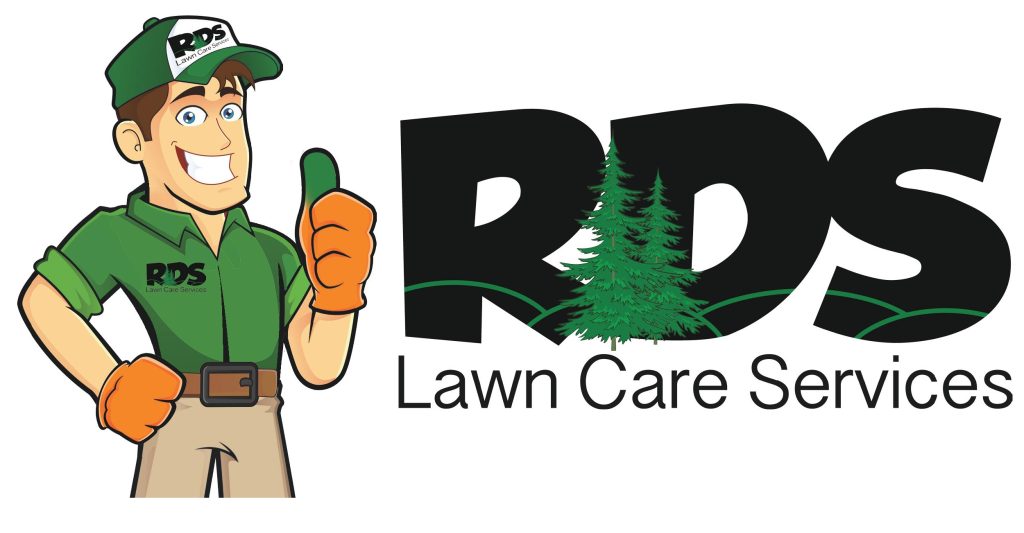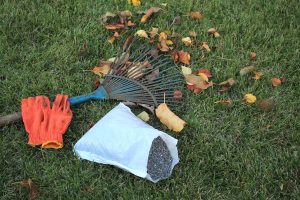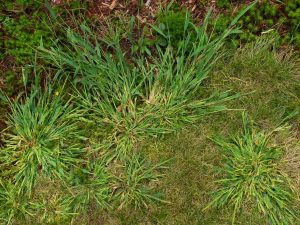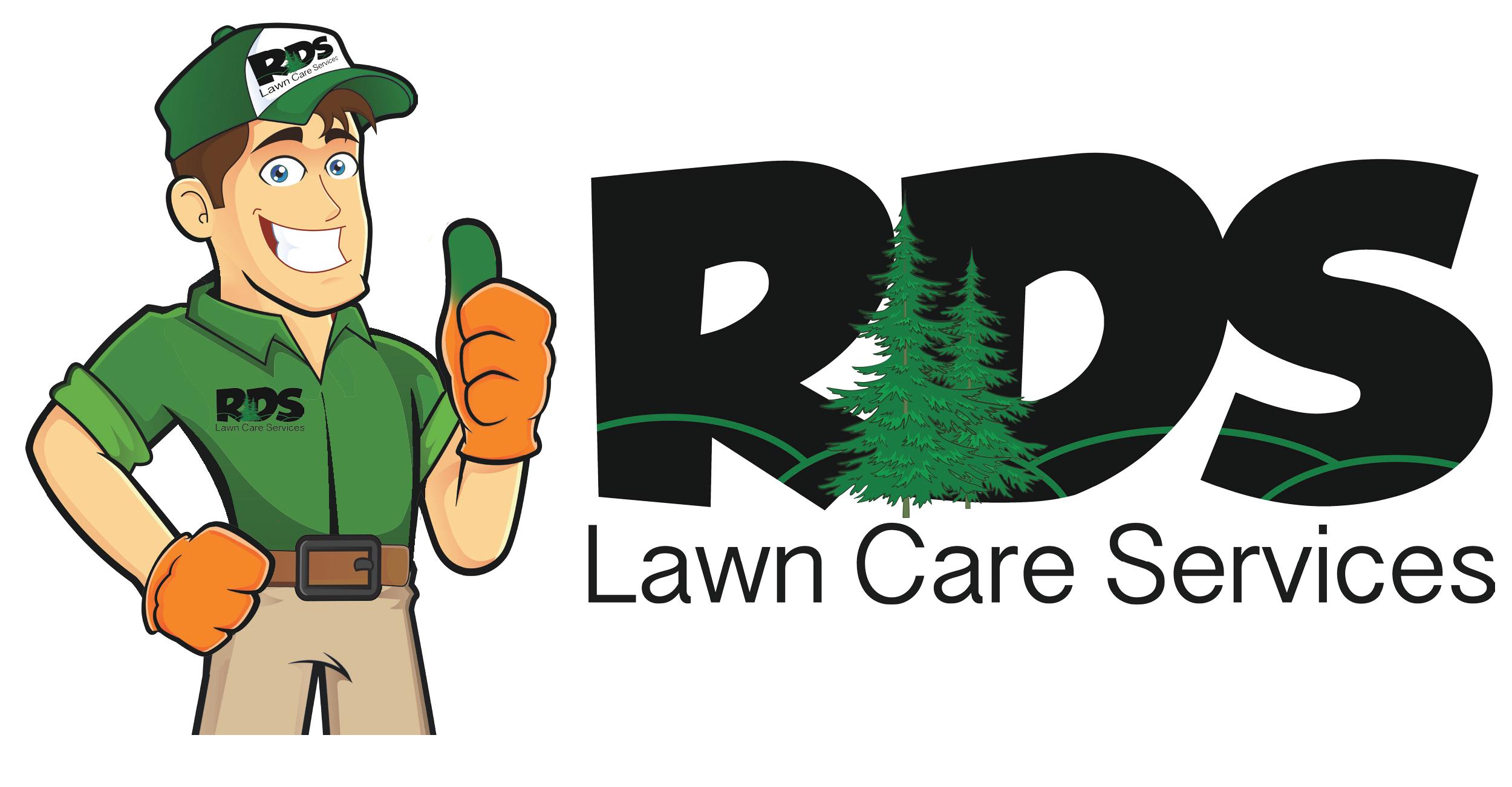What Is Overseeding?
Overseeding is the process of laying down grass seed over an already existing lawn that is struggling to grow. Overseeding does not involve turning or disturbing the soil, which is a much more involved and labor-intensive process known as new seeding. Rather, overseeding is a minimally invasive way to strengthen and thicken lawns with persistent bare spots and/or thinning issues.
Benefits Of Overseeding
Your lawn can and will become damaged from a variety of factors over time, and overseeding is an easy way to combat that damage and maintain a healthy lawn. Proper fertilization and watering can go a long way in restoring your turf, but there is only so much that can be done by these tasks alone if there are no seeds or strong roots present in the soil. When fertilization and other efforts fail to create the lush lawn of your dreams, overseeding could be the answer to your problems.
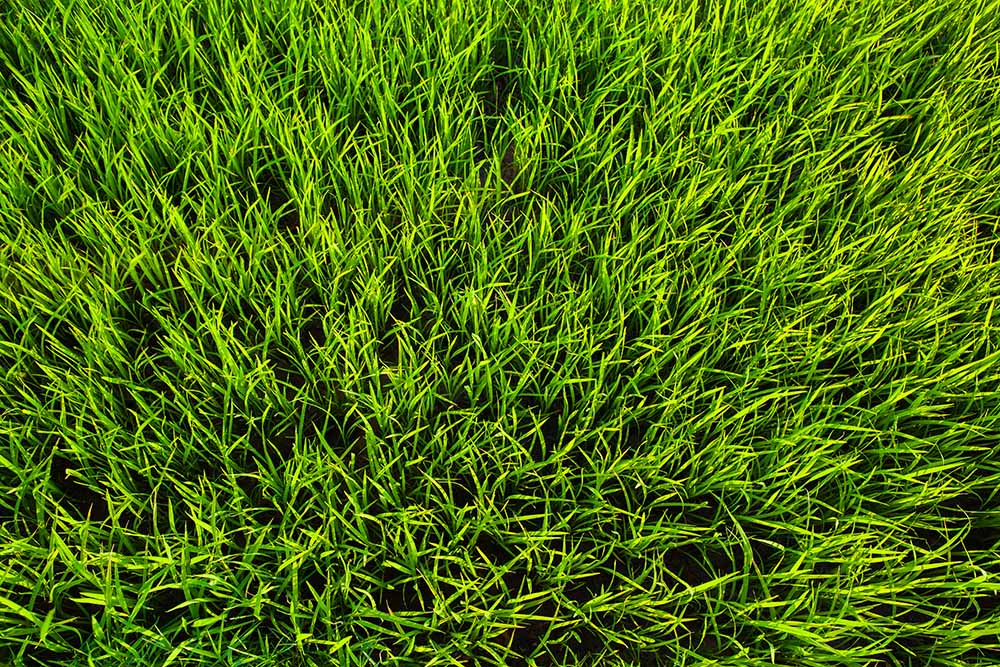
Thicker Lawn
Even if your lawn appears relatively healthy and green, you will be surprised at how much more vibrant your lawn can become with overseeding. Bare spots and thin grass may just be a result of not enough seeds to germinate in the soil, and overseeding will correct this issue.
Greener Grass
Fertilizing is necessary to creating a greener lawn, but overseeding can not be overlooked. It is the job of fertilizers to make grass strong and green, but there must be existing seeds and roots for fertilizers to work. Overseeding produces more grass, which makes fertilizers more likely to succeed.
Erosion Protection
A thicker lawn means reduced water runoff. As the seeds begin to germinate and seedlings turn to mature grass, your lawn will have more material for absorbing water and nutrients. Your lawn will become healthier as it absorbs more water, which also helps your lawn avoid standing water and puddles.
Weed Control
Weeds compete for the same nutrients that your lawn needs. Struggling lawns often fall victim to weeds because there is not healthy grass to overpower the weeds. Overseeding creates more grass, which means more healthy roots can go to work absorbing nutrients and choking out unwanted weeds.
Disease Control
Just like weeds, fungal lawn diseases spread quickly across struggling lawns. If overseeding is performed correctly, those patches of struggling turf will have a better chance at fighting back and stopping the spread of harmful fungi.
Pest Prevention
Lawn pests, such as mosquitoes, wasps, and ants, are notorious for hanging out in and around damaged lawns. Standing water and thinning grass create an ideal environment for pests, but overseeding will help prevent such issues.
How To Overseed
Step 1: Prepare Your Lawn
When it comes to preparing your lawn for overseeding, it is always a good idea to start with low mowing. A day or two before overseeding takes place, set your lawn mower up to two inches lower than what is typical. Though this is generally not the guideline for proper lawn mowing, a shorter lawn will help ensure that the seeds make it down into the soil. After mowing, make sure to remove clippings from the lawn and rake up any thatch and debris that could block the seeds. If weeds are growing near the areas where you plan to overseed, make sure to pull them up by the roots. If the soil feels compacted, aeration may be needed before seeding can begin.
Step 2: Amend The Soil
Testing your lawn’s soil can be done relatively easily, and it will help you determine if your soil is ready to receive and nourish seeds. A simple at-home testing kit can indicate the acidity of the soil so you will know what amendments are necessary. Lime can be added to increase the pH of your soil, and sulfur products will help you decrease the pH of your soil. If your lawn is too acidic, sulfur treatments should take place a couple of months before seed is laid down, so it is a good idea to test your soil periodically throughout the growing season.

Step 3: Select Seed
Grass types mainly get categorized as either warm-season grass or cool-season grass. Warm-season grasses include Bermudagrass, St. Augustinegrass, and centipedegrass, and they thrive in hotter, humid climates. Cool-season grasses include tall fescue, fine fescue, and Kentucky bluegrass, and they do well in northern states with more temperate climates. Some grass types are more equipped than others to withstand factors like shade, cold, heat, drought, etc., so climate and location need to be factored in when selecting the best grass for your lawn. Check out our grass identification guide for North Carolina for more information on the best grass types for our area.
Step 4: Spread Seed
Overseeding is often performed by hand in isolated areas where grass struggles to grow, but spreaders can be used to cover more ground. A traditional spreader has a large spread radius, and a slit spreader actually makes slits in the ground where seeds can be deposited. No matter which option you choose, the best way to achieve your desired results is to be patient and thorough while overseeding. Walk slowly to make sure no areas are missed, and always check the label on the seed being applied because it will indicate how much seed to use.

Step 5: Maintenance
After your seed is applied, you will have to give your lawn a little extra care before you can return to normal landscaping routines. Watering must be performed immediately after overseeding, and this initial watering should utilize about an inch of water. The amount of water used can decrease after the initial watering, but watering sessions should continue daily until the grass begins to emerge. Use a starter fertilizer that is designed to help young lawns develop, and avoid using pre-emergent herbicides that will prevent grass growth. Mow lightly, or not at all, until your lawn appears fuller and greener.
When To Overseed
Your geographic location should be the main factor behind your choice of grass type, and that grass type is what determines when to seed. Warm-season grasses should be seeded in spring or early summer in order to reach peak growth, and ground temperatures for applying warm-season grass seed should be at least 65 degrees. Cool-season grasses are typically seeded in early fall, which helps strengthen your lawn over winter, and ground temperatures for applying these seeds should be around 50 degrees.
Most of North Carolina is in what would be considered a “transition zone,” and both warm- and cool-season grasses can thrive in this climate zone if they are cared for properly. Specific grass types should be seeded in their appropriate seasons, but cool-season grasses (like the popular tall fescue) can be seeded in spring if necessary. Lawns in these zones can be tricky to seed effectively because of the uncertain climate, so it is best to look for issues like thinning grass or yellow patches to help you decide if it is time to overseed.
DIY Lawn Overseeding vs. Professional Overseeding Services

If overseeding sounds simple, it’s because it is! However, many people begin the process of DIY overseeding and quickly realize they are in over their heads. Effective application of seeds over an existing lawn requires expertise and equipment that most people simply do not possess. Additionally, overseeding does not end after seeds are applied; watering, fertilizing, and tailored maintenance must be continued in order to see results from overseeding, and many people are unprepared for the patience they must exhibit.
When you go with an experienced overseeding service provider like RDS Lawn Care, you are getting a complete service that vows never to cut corners! Our overseeding service includes the use of equipment, products, and even seeds that the general public can not easily access. Call RDS for your overseeding needs, and we will provide the following:
- Core Aeration
- Thatch Management
- Lab-Tested Seeds
- Overseeding
- Starter Fertilizer
- Initial Deep Watering
- Detailed Aftercare Instructions
Overseeding FAQ
Watering must be performed immediately after overseeding, and the initial watering should last up to 30 minutes and produce at least 1 inch of water coverage. The soil should stay consistently moist until seeds germinate, which typically requires 2 or 3 waterings per day for the first week and watering every other day after that.
The main thing to remember when it comes to quantity of grass seed is that you want to make sure your lawn is covered. Unless you are trying to seed only a couple small patches, you want to have your soil completely seeded for the best results. Depending on the grass type you choose and how damaged your lawn is, you could need anywhere between 4 and 8 pounds of seed per 1,000 square feet. To be sure the right amount of seed is applied, consult with an expert and/or read labels thoroughly for instructions.
Grass seed, unfortunately, can be expensive, but it all depends on the type and amount of seed that is needed. A 50-pound bag of name brand grass seed could cost $150 or more (depending on region and grass type), but lesser-known brands may sell the same quantity of seed for only $40 or $50. Make sure to shop around for the best option, and consider calling RDS for your overseeding needs to get the best bang for your buck!
Tall fescue is the most resilient and adaptable cool-season grass, which makes it the perfect choice for overseeding before winter. North Carolina is in a transition zone, which means warm-season options like Bermudagrass are also available for overseeding. Always make sure you know which grass type is currently in your lawn before introducing a different type with overseeding.
Overseeding can change your lawn’s grass type, and many people choose to do so intentionally. Instead of tearing up your entire lawn to plant new seed, overseeding enough to overtake the existing grass can be performed for a minimally invasive option. Mixing grass types can actually produce a more resilient lawn, but make sure you check with a professional before introducing a different kind of grass to the soil.
If the proper care is not taken, you can certainly damage your grass by overseeding incorrectly. If the land is not prepared properly, seeds may not have enough nutrients to germinate, and they will just sit in the soil. If too much seed is placed down in a concentrated area, the soil may become suffocated. Of course, laying down a grass seed that does not mix well with the existing grass is one of the main issues people run into when it comes to overseeding. When done properly, however, overseeding is a great way to create a healthier and fuller lawn.
Overseeding can be done with nothing but the seeds in your bare hand, but why not use all the tools available? Core aeration produces small holes in your lawn that are the perfect place for grass seed to germinate and take root. Aerating will also make your soil softer and improve nutritional intake for your grass, making it one of the most beneficial services your lawn can receive when paired with overseeding.
Fertilizing is an important part of any lawn care routine, and this is certainly the case with overseeded lawns. Fertilizing should be performed within the first few days following overseeding to give seeds the best chance at germination. The main thing to remember when fertilizing is to use a starter fertilizer. Using a summer fertilizer or other fertilizer that is designed for established lawns could put too much stress on the young seedlings as they try to grow. Starter fertilizers are gentler and contain less nitrogen to avoid stress. Check labels before purchasing a fertilizer, or call RDS for the best lawn fertilization service in North Carolina.
